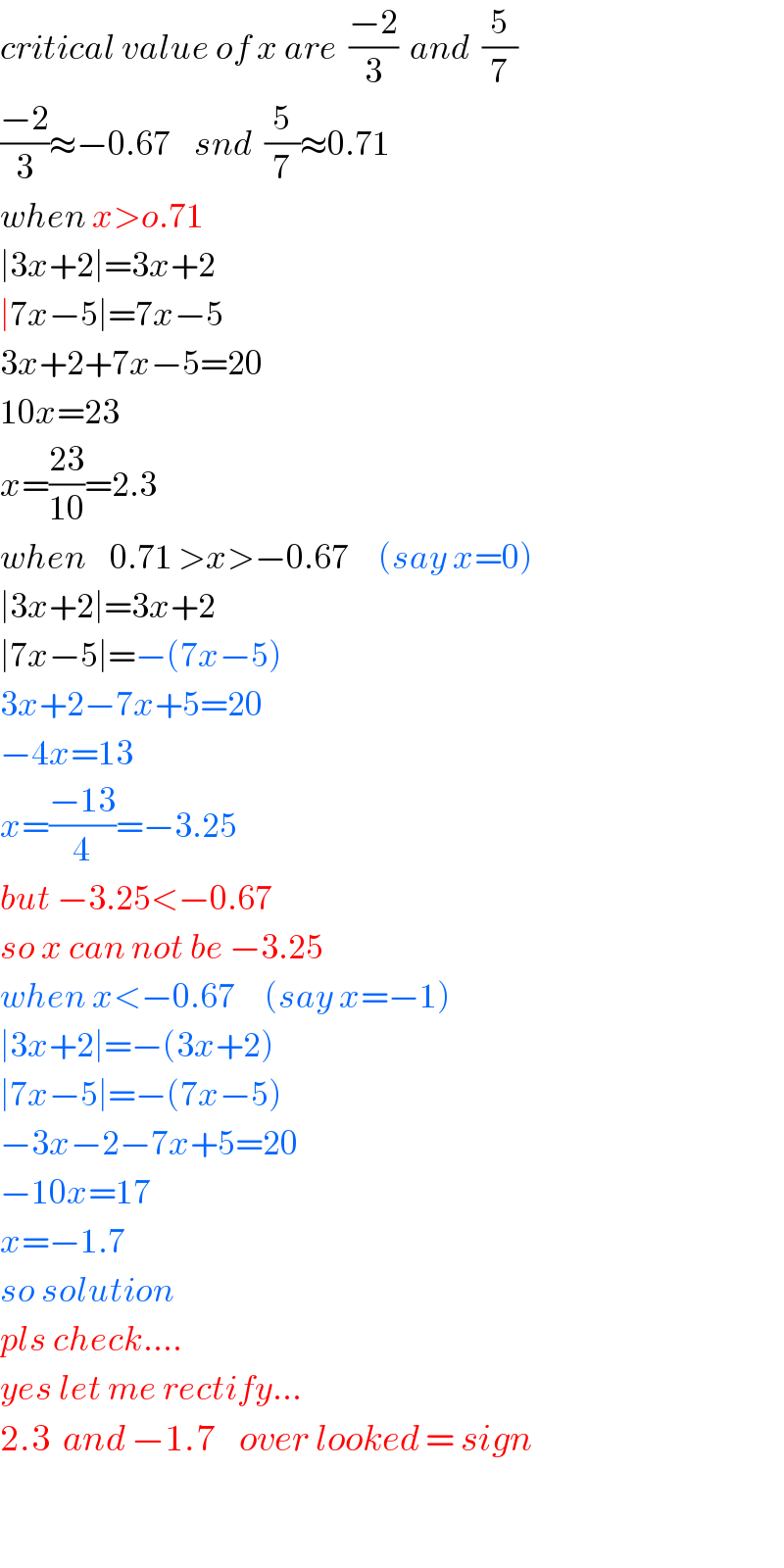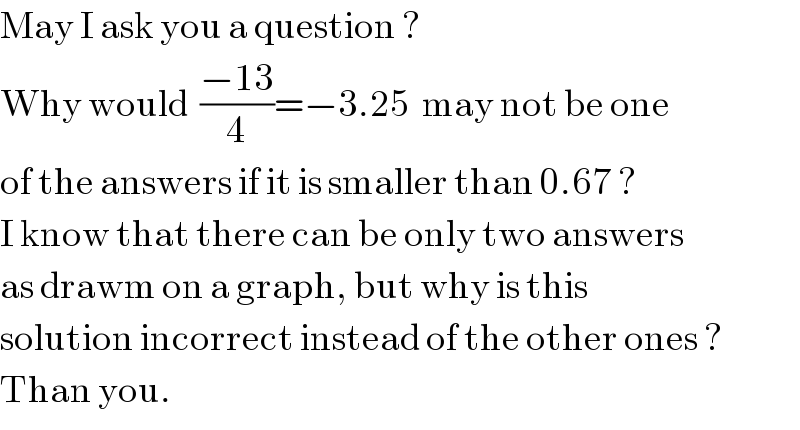
Question and Answers Forum
Question Number 47224 by hassentimol last updated on 06/Nov/18

Commented by maxmathsup by imad last updated on 06/Nov/18
![let first eradicte the absolut value x −∞ −(2/3) (5/7) +∞ ∣3x+2∣ −3x−2 0 3x+2 3x+2 ∣7x−5∣ −7x +5 −7x+5 0 7x +5 A(x) −10x+3 −4x +7 10x +7 equ. ⇔ A(x)=20 case 1 x ∈]−∞,−(2/3)] A(x)=20 ⇔−10x +3 =20 ⇔−10x =17 ⇔x=−((17)/(10)) −((17)/(10)) +(2/3) =((−34+20)/(30)) =((−14)/(30))<0 ⇒ −((17)/(10))<−(2/3) so the number is solution case 2 x ∈[−(2/3) ,(5/7)] A(x)=20 ⇔ −4x+7 =20 ⇔−4x =13 ⇔x=−((13)/4) −((13)/4) +(2/3)<0 ⇒−((13)/4)<−(2/3) so this number is nt solution case 3 x∈[(5/7),+∞[A(x)=20 ⇔ 10x +7 =20 ⇔10x =13 ⇔x=((13)/(10)) ((13)/(10)) −(5/7) =((13.7 −50)/(70))>0 ⇒((13)/(10))>(5/7) so this number is solution so the (e) have 2 solutions −((17)/(10)) and (5/7) . ∣](Q47245.png)
Commented by hassentimol last updated on 07/Nov/18

Commented by maxmathsup by imad last updated on 07/Nov/18

Answered by MJS last updated on 06/Nov/18
![x<−(2/3) ⇒ ∣3x+2∣=−3x−2 x≥−(2/3) ⇒ ∣3x+2∣=3x+2 x<(5/7) ⇒ ∣7x−5∣=5−7x x≥(5/7) ⇒ ∣7x−5∣=7x−5 x∈I_1 =]−∞; −(2/3)[ −3x−2+5−7x=20 ⇒ x=−((17)/(10)) x∈I_2 =[−(2/3);(5/7)[ 3x+2+5−7x=20 ⇒ x=−((13)/4)∉I_2 ⇒ no solution x∈I_3 =[(5/7); +∞[ 3x+2+7x−5=20 ⇒ x=((23)/(10))](Q47249.png)
Answered by tanmay.chaudhury50@gmail.com last updated on 07/Nov/18

Commented by hassentimol last updated on 06/Nov/18

Commented by tanmay.chaudhury50@gmail.com last updated on 06/Nov/18

Commented by hassentimol last updated on 06/Nov/18

Commented by tanmay.chaudhury50@gmail.com last updated on 07/Nov/18

Answered by peter frank last updated on 07/Nov/18

Commented by maxmathsup by imad last updated on 06/Nov/18

